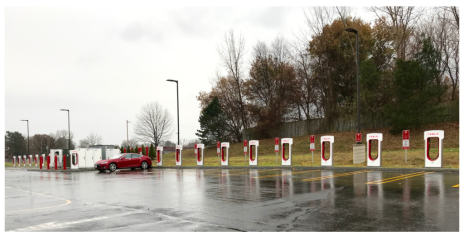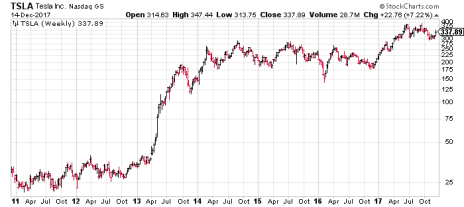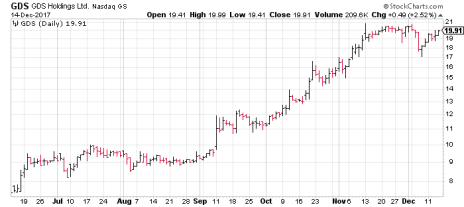I’ve had my Tesla Model S for more than four years. Over that time, I’ve driven it more than 50,000 miles, through 28 U.S. states and two Canadian provinces. And in that time, I’ve happily answered questions from hundreds of people who are curious about life with a gasoline-free car. Here are the most common questions about driving a Tesla — along with my answers.
10 Questions about Driving a Tesla
1. How long does it take to charge?
If I plug into a regular 110-volt wall outlet, it takes about three days: that’s called Level 1 charging. A Level 1 charger adds about three miles of range per hour.
If I plug into a 220-volt outlet, like the one I had installed in my garage, it might take eight hours; that’s called Level 2 charging, and it’s as easy as plugging in your phone every night. A Level 2 charger might add 30 miles of range per hour.
[text_ad]
If I plug into a Tesla Supercharger during a road trip, I might charge for 10 minutes—enough for a quick bathroom break—or I might charge for as long as an hour. A Level 3 charger can add between 200 and 350 miles of range per hour, and I charge long enough to get to my next destination with some power to spare.
Here’s a photo I took at the recently opened 20-Supercharger installation at Crossgates Mall in Guilderland, New York, where we stopped on the day before Thanksgiving.
Generally, it’s not wise to charge the battery to full. Squeezing those last electrons in is an increasingly slow process and reduces the battery’s life a bit. So I only charge to full before the start of a long drive.
2. How far can you drive before you need to plug in again?
On average, 248 miles. I do better on summer days on slower roads, and worse in the winter on highways when it’s snowing. (Snow, water and speed all increase friction, while lower temperatures decrease the battery’s efficiency.)
3. What does the garage charger cost?
The charger costs $500. The cost for an electrician to install it depends on your electrical service. All in, it will probably be higher than $1,000 and could top $3,000.
4. What does it cost to charge?
For simplicity, I often tell people it costs about $20 to fill up.
The complex answer looks like this:
My current cost of electricity is 9.9 cents per kWh, but once National Grid adds Customer Charge, Distribution Charge, Transition Charge, Transmission Charge, Energy Efficiency Charge and Renewable Energy Charge, my cost climbs to 22.1 cents per kWh. That means that “filling” my 85 kWh battery at home costs $18.78.
However, I don’t pay for all my energy! I frequently charge at the Cabot office; when I’m in downtown Salem, I often charge at the municipal garages, where charging is free; when I’m on road trips, I favor lodging where charging is free; and, of course, there are the wonderful Tesla Superchargers, which are free for the life of my car.
5. Have you ever run out of power and been stranded?
No. But I never ran out of gas in a gasoline-fueled car either—and that includes my father’s 1956 VW Beetle, which didn’t even have a gas gauge. The closest I’ve come to being stranded since I started driving a Tesla was when the car began an overnight software update in the Adirondack mountains of New York and the cell reception was so weak that the update had trouble completing—though it eventually did. (I learned a lesson.)
6. How fast does it go?
I’ve never gone to maximum speed, which I understand is 155 mph. What’s far more useful is the car’s quick acceleration, which is a feature of most electric cars.
7. Is it all-wheel drive?
No, all-wheel drive was not available when I bought my car, but I would certainly opt for it now, given that this is my year-round car and I still ski.
8. How does it drive in the snow?
It drives like any heavy rear-wheel drive car but better, because of two factors. Factor one is that the battery pack means the car has a very low center of gravity and is well-balanced. Factor two is that the totally electric powertrain enables near-instant response by the traction control system, whether it’s for acceleration (two wheels) or deceleration (four wheels) or steering. Still, I always mount snow tires for the winter.
Also, one neat feature is that simply by using the Tesla app on my phone, I can preheat the car in winter or pre-cool it in summer.
9. Have you driven the SUV (Model X) or Model 3?
I have not driven the Model 3, but my brother expects to receive one of the early deliveries, so ask me in a few months.
I did have a Model X as a loaner for a while, and I will say that it is a wonderful passenger car, with plenty of space and a panoramic windshield. But it’s not a driver’s car. Also, the styling is plain vanilla—but some people like vanilla!
10. What’s the one question you wish people would ask about driving a Tesla?
Do you ever miss pumping gas?
Answer: Not on your life! In fact, I look forward to the gradual disappearance of the network of gasoline stations that pollute our roadsides as we slowly shift to a world of electric vehicles that are shared in various ways.
Extra Bonus Question: Is Tesla Stock a Good Investment Today?
Yes, but there are more attractive opportunities for new buyers.
Here’s a long-term chart of TSLA.
Clearly, the best time to buy the stock was before its big surge in 2013. Back then, there was great skepticism among investors and the stock was cheap from today’s perspective. (I recommended it to my Cabot Stock of the Week readers back in late 2011 when the stock was 29—and those subscribers who have held it as advised now have profits exceeding 1,000%.)
But for the past four years, Tesla has been a household name and the stock has been very visible, and those are not conditions for discovering great opportunities.
Yes, the company still has a great future, and yes, I do advise readers with big profits to continue holding, but for readers seeking big profits, I recommend buying new, undiscovered stocks.
My Latest Undiscovered Stock
Here’s a chart of my latest recommendation.
GDS Holdings (GDS) is a small, fast-growing Chinese company that few U.S. investors have heard of, but it’s growing fast. Revenues were up 47% in 2015, 42% in 2016 and 56%, 40% and 43% in the first three quarters of 2017, respectively, and the future is very bright, as GDS performs key functions in enabling internet commerce in China.
For full details, and to see all the stocks in my portfolio, click here.
[author_ad]



